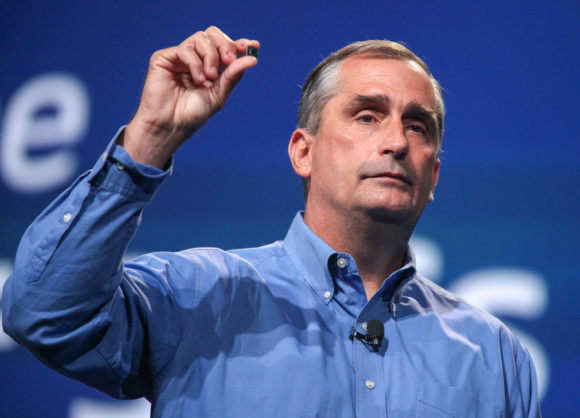 NEWS
NEWS
 NEWS
NEWS
 NEWS
NEWS
![]() Slightly overshadowed by Apple yesterday, Intel’s Developer Forum kicked off in San Francisco with a tiny little event hosted by Intel Labs, known as Day O. The event is normally used to showcase some of Intel Lab’s newest devices, but this year it served up an altogether unexpected announcement with the unveiling of a new product known as the Quark.
Slightly overshadowed by Apple yesterday, Intel’s Developer Forum kicked off in San Francisco with a tiny little event hosted by Intel Labs, known as Day O. The event is normally used to showcase some of Intel Lab’s newest devices, but this year it served up an altogether unexpected announcement with the unveiling of a new product known as the Quark.
Quark is a series of tiny new chips built on the open architecture SoC platform, and it has the potential to be important for two reasons – they’ll be used to power to power wearable technology – devices smaller than anything Intel has previously be involved with, and they could raise a very serious challenge to its rival ARM in the mobile space.
Essentially, Quark is going to be Intel’s assault on what’s known as the Internet of Things, and should help the chip maker figure prominently as it bids to become a key player in this new world of connectivity. Speaking at Day 0, Intel’s new CEO Brian Krzanich noted that tablets and smartphones might be where mobile computing is at now, but its not the end-state. The next wave of computing is evolving as we speak, with wearable gadgets (like Samsung’s Galaxy Gear), robotics and sophisticated sensors just some of the first applications that could be powered by Quark.
For now, we don’t know exactly what devices might be powered by Quark though Intel has developed a number of reference designs and concept devices that its ready to send out to its developer community. Intel’s goal isn’t to bring its own devices to the market, but rather to entice its partners to develop products from its own designs. As such, Quark is fully snythesizeable with open architecture and an open ecosystem, stated Kraznich in his talk.
But what’s so different about Quark? Well, it’s tiny, its about one-fifth the size of Intel’s smallest Atom processor. We don’t know how much power it’ll deliver, but certainly it’ll be up to the job of driving the kinds of devices its intended for, and perhaps even more appealing is that it uses only one-tenth of the power of the Atom chip. This alone should prove to be very tempting for Intel’s partners in the energy, industrial and transportation markets.
Looking closely at the specs and the use cases, its clear that Intel is gunning for some of the market segments that are chiefly dominated by its rival ARM, whose Cortex M and Cortex R processors already compete in the same space. Meanwhile, ARM juggernaut Qualcomm has already made it clear it intends to compete in the Internet of Things, having produced its own Cortex M designs and a number of sample products powered by them, such as the Toq smartwatch that was announced last week.
Intel said that it’s hoping to start shipping Quark-powered smartwatches and bracelets by this time next year. No doubt we’ll hear lots more about its plans for the Internet of Things in the weeks and months ahead.
THANK YOU